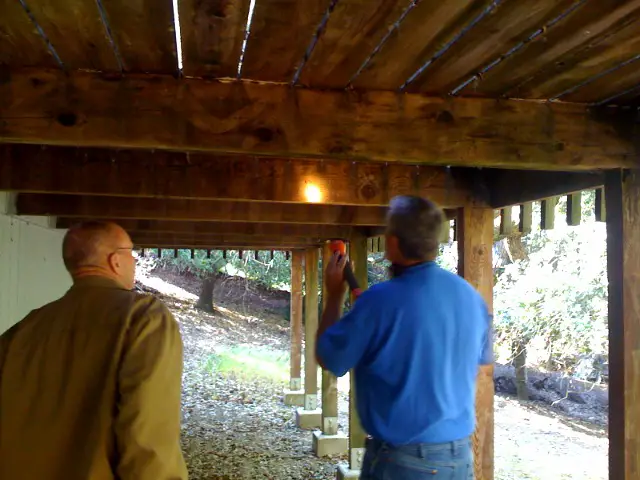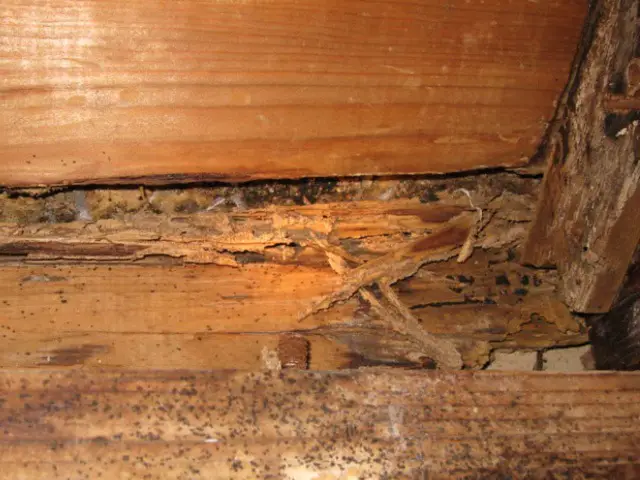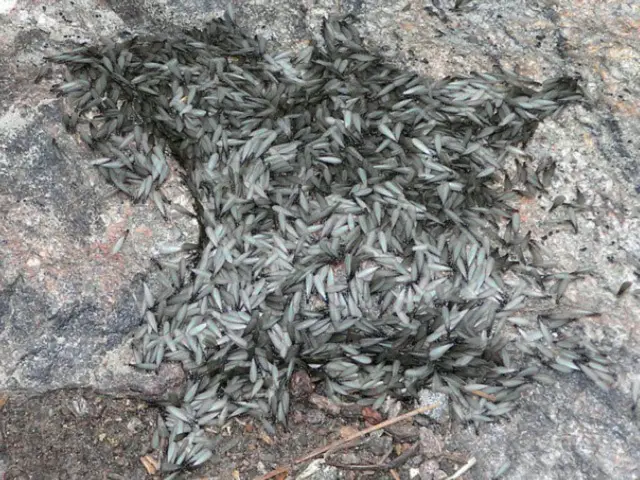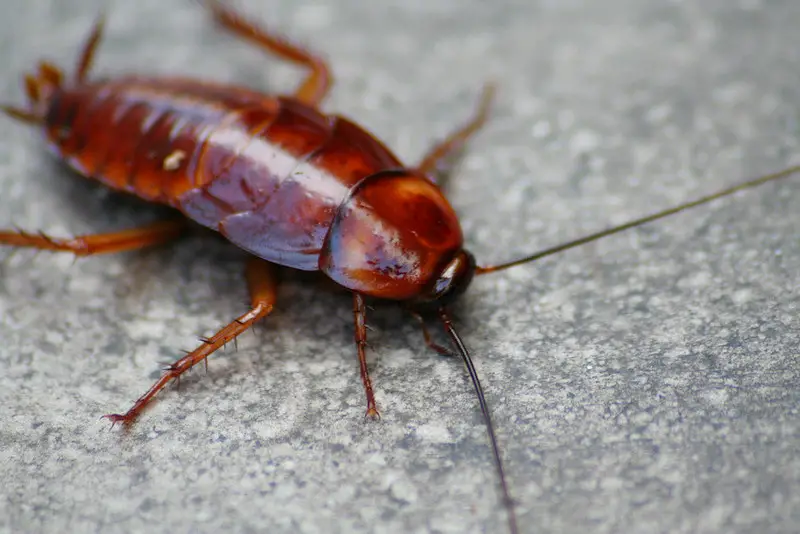Rat Trapping, Squirrel Trapping, Mouse Trapping
If you have a rodent problem in your house, you need to take care of it fast before it grows into a health issue that could affect you and your family. Knowing how to trap rodents properly will help you prevent rodent-borne diseases.
Rat and Mouse Trapping With Traps
While there is a wide variety of rat and mousetraps to choose from, the basics include live traps, snap traps and glue traps. Live traps are the most humane of the three since they do not outright kill the rodent. Instead, you can set the rodent-free outside or somewhere else. This may not be the best decision for a rodent infestation since the rat or mouse is likely to find its way back into your home to its nesting area. However, if it is a single mouse or rat, it is a much cleaner way to deal with rodents.
For several or more rodents, using traps is safer than hazardous poison baits. You get immediate results and can easily dispose of the dead rodents, avoiding odor problems that will attract insects or other creatures. In order to catch the rodents effectively, you will need to set up “unset” traps first to acclimate the rats with the object. Then, after a few days, bait the trap with something small like chocolate candy or dried fruit.
The biggest problem is that people do not set enough traps. You want to set up many traps to kill off the population before they can repopulate or become wary of the trap. Other traps include glue boards, which are less likely to cause harm but more painful for the rodent.
Suggested article: “How long can a mouse live without food?”
Rat and Mouse Trapping with Bait
Bait is another trapping method that tends to work when there is more than one mouse or rat but not an infestation. Place the bait close to walls, at the openings outside of the buildings or in front of doorways where the rodents are likely to scurry.
Mice and rat bait should be set up in small amounts at many locations. Eliminate the source of food as much as possible because if the mouse or rat sees the food source, they are going to ignore the bait. Try buying a bait station that encourages feeding by providing the rats and mice with a sheltered, attractive area to eat. Rodent bait is very poisonous, so be cautious about using it with pets or children in a home.
Squirrel Trapping with Live Traps
Squirrels are rodents since they can get into attics, walls and more. Keeping squirrels under control means prevention methods in addition to trapping. Remove the source of food, such as birdseed, and trim tree branches to stop attracting the squirrels. Use a single door trap to lock in the squirrel automatically before it can escape.
Lure the squirrels in with fruit or crackers, or leave a trail of seeds into the trap. If you don’t feel comfortable working with live traps, call an exterminator or pest control agency to help you get rid of those annoying critters before they overrun your home.
Rodent trapping and control
Rats, mice and other rodents are a growing problem. Rats and mice are causing damage to homes and buildings all over the USA. In particular, mice and rats are plaguing homeowners and troubling communities all over the country. Rats and mice can be found from the most northern to the farthest southern points of the country.
Rats and mice can be found both in the desert areas as well as the mountain areas and anywhere in between. All over the United States, east and west, rodents can be found building nests, posing a threat to homes and properties. But, with special attention to the behavior patterns of these rodents and their ecological needs, it is possible to permanently rid your home and property of rats and mice.
Where to begin trapping mice and rats?
First, it is important to identify the particular type of rodent problem you are having, although Pack rats, roof rats and mice pose similar destructive problems to a homeowner. Each of these rodents has a slightly distinct body shape and size.
The feces left behind from each rodent is also somewhat distinct, with the pack rat’s dropping being larger and more round than the roof rat’s thinner, more cylindrical waste product. Both rats have unique nesting behaviors that can determine how to treat the infestation in your home or building.
Next, get out a bright flashlight and a safe, sturdy ladder that will allow access into an attic or crawl space. Look carefully for droppings and dark urine spots, which indicate the presence of rats. Also, look for torn insulation, chewed pieces of plastic in a pile, and debris from plants, trees, or seeds. It is very important to take note of chewed or exposed electrical wiring. If your property has any damage to electrical wiring or systems, it is crucial to call a licensed electrician to evaluate the electrical damage and prevent a fire from occurring and a licensed wildlife and pest control expert immediately to help stop the problem from becoming worse.
Look around the property for rodent droppings, chewed patio furniture, and possible pool or spa equipment damage. Inspect air conditioning equipment for signs of packrat nests or other rodent debris. Open utility doors and look for dark urine spots, feces, and other chewed areas to drywall, wood, or wiring. It is very important to assess all damage rodents may be causing to your home or property. Locating the areas in your home or property being affected by rodents will help determine where and how many traps to use to remove the roof rats and pack rats permanently.
Mice and Rat Traps
After discovering roof rats or pack rats on your property, it is time to get the traps out. Special care should be taken not to step through a ceiling or to damage roofing materials when traps are set. Damage to your home by a spouse, other relatives, friend, or neighbor is not usually covered by a liability insurance policy, which all qualified wildlife and pest control experts should carry.
Having found where the rodents are hiding, use a small amount of peanut butter or birdseed on a trap to attract the rats. Use only new, well-conditioned traps that have a highly sensitive spring-loaded mechanism. Set the trap in an easy to retrieve location and check it often – at least once a day – so that a dead rodent will not rot and breed fly larva in your attic or home.
After catching a rat or mouse on your property, carefully dispose of the dead rat into a yard trash container so the decaying smell will not remain in your home or building. Be sure to wash your hands immediately after handling a dead rodent. Both live and dead rodents carry many diseases and harmful bacteria, which can cause illness. If you hear a trap sprung and a squeak of a roof rat or a pack rat, your efforts may have immediately paid off. Quickly retrieve the trap and dispose of the rodent in an outside bin. Sometimes the trapped rat may still be alive and only injured while trapped. In this case, it is important that the rodent be killed in a humane way and not left in the trap to suffer.
Trapping should be an ongoing process to rid your home or property of roof rats or pack rats. Check the traps often and make sure the bait used is fresh and the traps are loaded correctly. If the trap is not set correctly, the rodent can easily remove the bait without the trap being set off. When checking on your traps, if the bait is removed and the spring has not yet been triggered, it is possible that an improperly set trap has just offered a free meal to a destructive rodent in your home.
Rats and Mice Cause Serious Damage To Homes
So what kind of damage could a reasonably small, relatively lightweight mouse or rat possibly do to damage your home? Having seen the aftermath of a rodent infestation first-hand, pest control professionals can tell you that even a single rat can cause a lot of damage in a home.
Rats and mice chew, and chew more until they ultimately ruin whatever is in their path. They chew through walls and insulation, build nests, contaminate your food, and spread disease. Roof rats and pack rats also leave behind a path of feces or droppings, as well as a runway of urine throughout an infested home.
Damage to homes by rats can be anywhere from a few hundred dollars to repair upwards of tens of thousands of dollars to restore and repair homes that have been damaged by pack rats, roof rats, and mice. In Arizona alone, the cost of annual rat damage to homes is in the millions of dollars. Imagine for a moment what the price tag would be if all of your home’s wiring needed to be replaced, the cost of re-insulating your entire attic, or the time, labor, and cost associated with the removal and proper cleaning of rat droppings and feces from your home’s walls, ceiling, attic, garage, basements, sheds, and even in your kitchen.
What exactly can rats damage?
Pack rats, roof rats and mice will chew through nearly anything in their path in their search for food and shelter. These destructive rodents are commonly found in a home’s attic space, where they are safe from predators and harm. While in an attic, they often will chew through plastic, rubber, paper, and wood. This means that all of the insulation, wiring, water plumbing, and even the roof stand in the path of rat destruction.
Rats tend to find doorbell, telephone, and thermostat wiring first. These wires are insulated and coated with a substance that roof rats and pack rats are attracted to and will tear to shreds. Rats will also chew the outer shielding of high voltage wires, exposing an attic to dangerous fire hazards. While a doorbell line can easily be repaired, a house fire can be a devastating consequence of rodent damage.
In their search for water, pack rats and roof rats will target plastic water lines, which are often plumbed through a ceiling to the icemaker of a refrigerator. After chewing through the line, water is free to run through the ceiling, walls, and floors of your home. Water damage is not only costly but also can lead to mold growth and other expensive damage.
While infesting a home, rats will urinate to mark the path in and out for other rats to find shelter and food. The rat’s feces build-up, marking the entire area with black droppings. A heavily infested home could have several hundred pounds of droppings above a ceiling. Often times that is the ceiling just above a home’s kitchen.
How do rats enter your home?
Mice and rats find their way into homes in a variety of ways. These rodents can often crawl through openings in the roof, walls, cracks in doors, or any other opening into a home the small size of a quarter. Roof rats and packrats usually enter a home as easily as if invited by the homeowner. While no builder should be held liable, it’s clear that today’s building standards do not consider the presence of rodents while planning to erect homes. Often there are gaps left in eaves, overhangs, vents, and other areas to the structure of the home that are barely noticeable to the untrained eye, which will allow rodents to enter a home.
As long as there is a single point of entry to come and go, these destructive rodents will continue to damage a home until they have been caught and all of the home’s openings have been properly sealed by a licensed and qualified wildlife and pest management professional.




